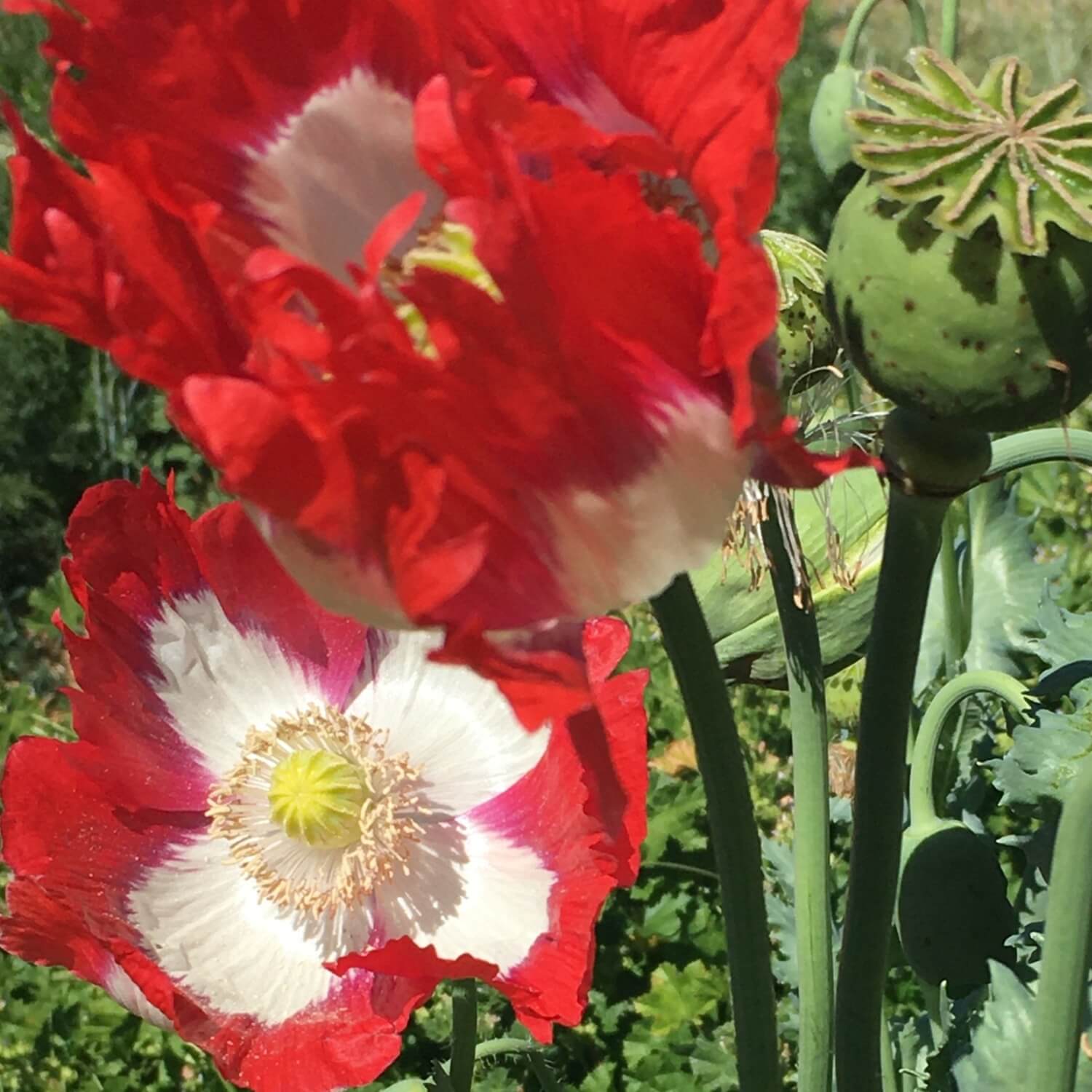
I remember my first encounters with quinoa many years ago, back when I still called it Kee-no-a. Somewhere along the way I learned the proper pronunciation, Keen-wa. This South American seed grain, Chenopodium quinoa, is a favorite summer grain crop on our farm.
Why eat quinoa? We love its nutty flavor and fast cook time. It is high in protein, about 14-18%, as well as calcium, magnesium and iron. Quinoa is also gluten free and contains all the essential amino acids.
Quinoa has traditionally been an indigenous staple and subsistence crop grown in the Andean region of South America for the last 3000 years. The recent rise in popularity among health conscious middle class Europeans and North Americans has meant hugely increased production and income for indigenous farmers. "In 2012 Peru banked nearly $35m from quinoa exports, tripling what it earned three years ago. In Bolivia exports tripled to around 23,000 tonnes, contributing some $85m to the country's economy." -the Guardian
The flip side is that many subsistence farmers in south America can no longer afford to eat quinoa. I recommend reading this article in the Guardian to learn more about the pros and cons of the quinoa trade and how it is affecting indigenous communities in South America.
In South America quinoa grows in extremely hostile environments, often frosting at night and baking during the day. It is adapted to climates where other crops would not thrive.
We have been growing quinoa for the past 5 years and have had great results. This past year we harvested 40 lbs to eat from about 300 plants. This is how we plant and process.
1. Choose a variety that is not day light sensitive. Brightest Brilliant Quinoa, Multi-hued Quinoa and Faro Quinoa will all do well in north America.
2. Start seedlings in trays with 100 cells about 3 weeks before your last frost date. Quinoa will germinate in 2 days and grow quickly.
3. Transplant when seedlings are about 3 inches tall into the ground. We found the best spacing to be about 8 inches apart. We plant three rows in three foot beds.
4. Harvest colorful seed heads in late summer when the dry seed will fall into your hands when rubbed. Birds generally do not eat the seeds because of the bitter coating.
5. Stomp to release seed and get rid of stalks. You can also rub the seed heads in your hands or against a screen as I am doing in the blue tub.
6. Winnow. This involves pouring the seed back and forth between containers in front of a fan. The chaff will blow away. Usually this step needs to be repeated many times.
7. Before eating your quinoa you will need to thoroughly rinse it. We do it in small batches in our vita mix blender on low. Usually we do about 2 cups to 8 cups of water and have to pour off the foamy water 5 or 6 times. This also helps get any chaff that may have been missed by winnowing. We have also tried putting it all in a pillow case and knotting the end then washing it in cold water in the clothes washer with no soap! Then dry it immediately on a window screen in the sun. Left damp overnight it will sprout!
8. Cooks in about 10 minutes! Yum!
 X
X








